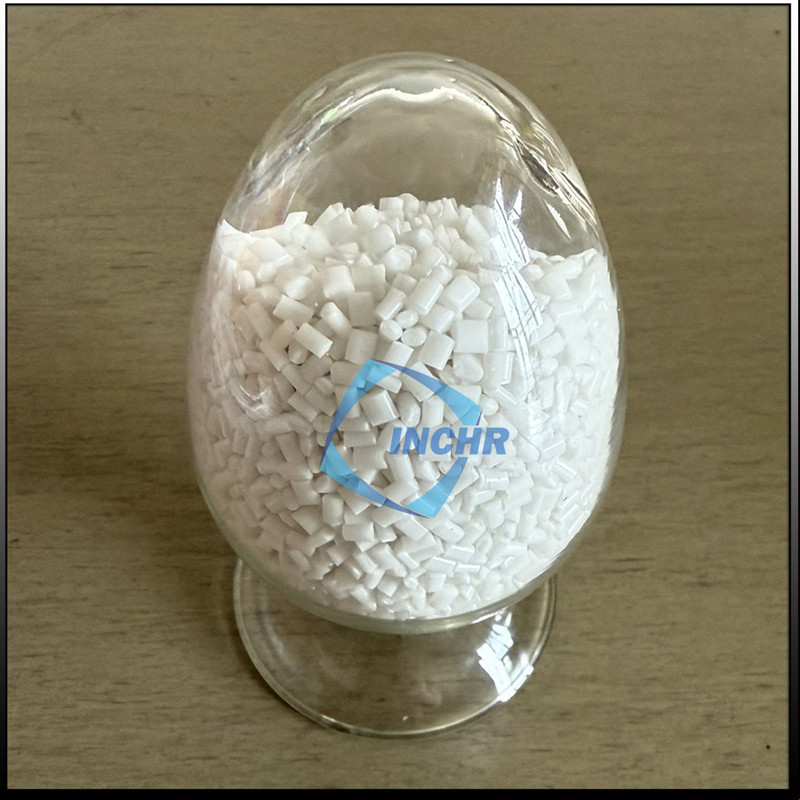As ultra-thin plastic films (<10µm) dominate next-gen packaging and electronics, traditional anti-blocking methods struggle to balance performance with precision. Anti block masterbatch is evolving beyond its conventional role, becoming a linchpin for innovation in nanotechnology and sustainable manufacturing. Let’s explore its transformative potential.

The Thin-Film Revolution: Why Conventional Additives Fail
Modern applications demand thinner, stronger films with zero defects:
Flexible Electronics: 8µm insulating films for foldable displays
Barrier Packaging: 5µm metallized films for chip bags
Medical Membranes: 10µm breathable films for wearable devices
Traditional anti-block agents (e.g., talc, diatomaceous earth) create visible surface defects at sub-15µm thicknesses. Modern silica-based masterbatches solve this with:
Submicron particles (0.5-2µm) for invisible surface texturing
Narrow PSD (particle size distribution) ≤1.5 dispersion index
Reactive surface groups that bond with polymer chains
The Quantum Leap: Anti Block Masterbatch in Nanocomposites
Nanocomposite films require atomic-level precision. Latest advancements include:
1. Plasma-Functionalized Silica
Gas-phase plasma treatment creates covalent bonds with polymers
Achieves 0.008 blocking force (ASTM D3354) at 1% loading
2. Core-Shell Architectures
Silica core + polymer shell prevents agglomeration
Enables 0.3% haze in optical films vs. 1.2% standard
3. Bio-Mimetic Surface Patterns
Lotus-leaf-inspired nanostructures (contact angle >150°)
Combines anti-block + self-cleaning properties
The Energy Equation: How Anti Block Additives Cut Carbon Footprints
A 2024 MIT study revealed optimized masterbatches can reduce film production emissions by:
| Process Stage | Energy Savings |
|---|---|
| Extrusion | 12-18% |
| Film Winding | 25% (reduced tear) |
| Scrap Reprocessing | 40% (less waste) |
Key Innovation: Low-friction masterbatches eliminate need for separate slip agents, cutting additive use by 30%.
The 7-Point Checklist for High-Speed Film Lines
Optimize anti-block performance in lines running >400m/min:
Melt Flow Ratio Matching
Masterbatch MFI within ±5% of base resin
Shear-Sensitive Dispersion
Use barrier screws with mixing sections
Electrostatic Control
Ionized air knives prevent particle settling
Real-Time COF Monitoring
Laser tribometers for instant feedback
Moisture Management
Keep hopper air dew point < -40°C
Layer-Specific Dosing
3D coextrusion: apply only to outer layers
Post-Treatment Compatibility
Ensure additives survive corona/plasma treatment
Case Study: Anti Block Masterbatch in Space-Grade Films
Aerospace films demand extreme reliability:
Challenge: 3µm insulation films for satellite components blocking at 200°C/vacuum
Solution: Ceramic-reinforced masterbatch with:
Yttria-stabilized zirconia particles
Thermal stability to 400°C
Outgassing <0.1% TML (NASA STD 6012)
Result: 18-month production run with zero adhesion failures
The Regulatory Tightrope: Global Standards Update (2024)
Navigate new compliance landscapes:
EU’s PPWR (Packaging & Packaging Waste Regulation)
Requires 50% PCR content + anti-block recyclability
FDA’s Updated Food Contact Notifications
Nano-additives now require particle migration studies
China’s GB/T 39693-2023
Mandates ≤0.5% haze for premium packaging films
Future-Proofing Strategies: What Top Manufacturers Are Doing
1. Digital Twins for Additive Optimization
Virtual prototyping reduces trial runs by 70%
2. Closed-Loop Recycling Systems
Masterbatches compatible with 7x reprocessing cycles
3. AI-Driven Particle Engineering
Generative algorithms design custom silica morphologies
The Hidden Risk: Anti Block Additives and Welding Defects
In multilayer films, improper masterbatch selection causes:
Seal Contamination: Migrated particles weaken heat seals
Solution: Use non-migratory grades with:
High molecular weight dispersants
Polar group anchoring tech
Test Method: Conduct hot tack tests (ASTM F1921) at 130-180°C
Field Report: Anti Block Masterbatch in Tropical Climates
High humidity regions require specialized approaches:
Problem: Additive clumping at 80% RH
Innovation: Hydrophobic mesoporous silica
Pore size: 3-5nm
Moisture uptake: <0.1% at 30°C/90% RH
Application: Successful deployment in Indonesian packaging plants




